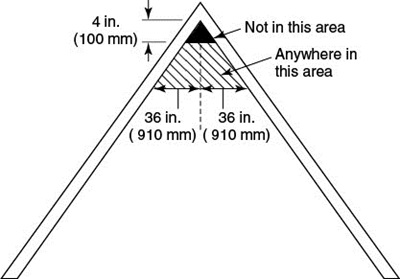
Installing and Maintaining Smoke Alarms

Installing your smoke alarms correctly -and making sure they are in working order- is an important step to making your home and family safer from fires.
- Choose smoke alarms that have the label of a recognized testing laboratory.
- Install smoke alarms inside each bedroom, outside each sleeping area, and on every level of the home, including the basement.
- On levels without bedrooms, install alarms in the living room (or den/family room) or near the stairway to the upper level, or in both locations.
- Smoke Alarms installed in the basement should be installed on the ceiling at the bottom of the stairs leading to the next level.
- Smoke alarms should be installed at least 10 feet (3 meters) from a cooking appliance to minimize false alarms when cooking.
- Mount smoke alarms high on walls or ceilings (remember, smoke rises). Wall mounted alarms should be installed not more than 12 inches away from the ceiling (to t he top of the alarm).
- If you have ceilings that are pitched, install the alarm within 3 feet of the peak but not within the apex of the peak (four inches down from the peak). See illustration below

- Figure A.29.8.3.1 from NFPA 72, National Fire Alarm and Signaling Code (2013 edition).
- Don’t install smoke alarms near windows, doors, or ducts where drafts might interfere with their operation.
- Never paint smoke alarms. Paint, stickers, or other decorations could keep the alarms from working.
- There are two types of smoke alarms - ionization and photoelectric. An ionization smoke alarm is generally more responsive to flaming fires, and a photoelectric smoke alarm is generally more responsive to smoldering fires. For the best protection, both types of alarms or a combination ionization-photoelectric alarms, also knows as dual sensor smoke alarms, are recommended.

- Smoke Alarms should be maintained according to the manufacturer’s instructions.
- Test smoke alarms at least once a month using the test button.
- Follow manufacturer’s instructions for cleaning to keep smoke alarms working well. The instructions are included in the package or can be found on the internet.
- Smoke alarms with non-replaceable 10 year batteries are designed to remain effective for up to 10 years. If the alarm chirps, warning that the battery is low, replace the entire smoke alarm right away.
- Smoke alarms with any other type of battery need a new battery at least once a year. if that alarm chirps, warning the batter is low, replace the battery right away.
- When replacing a battery, follow the manufacturer’s list of batteries on the back of the alarm or manufacturer’s instructions. The Manufacturer’s instructions are specific to the batteries (brand and model) that must be used. The smoke alarm may not work properly if the different kind of battery is used.
- When smoke alarms (interconnected or not) were on all floors, they sounded in 37% of fired and alerted occupants in 15%.
- When smoke alarms were not on all floors, they sounded in only 4% of the fires and alerted occupants in only 2%.
- In homes that had interconnected smoke alarms, the alarms sounded in half (53%) of the fires and alerted people in one-quarter (26%) of the fires.
- Michael A. Green and Craig Andres 2004-2005 National Sample Survey of Unreported Residential Fires. U.S. Consumer Product Safety Commission, July 2009
- American Red Cross Sound the Alarm




